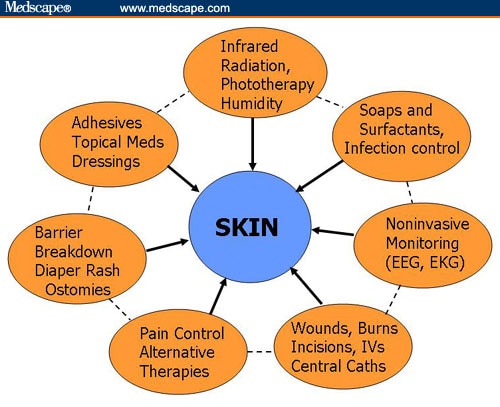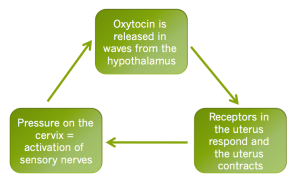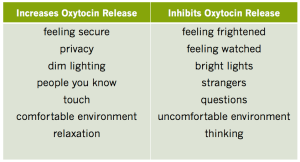Do you ever watch a television show where a baby is born and laugh as they hand the new mom a clean, approximately 8-week old baby? Most people are well-aware that babies are born with a slimy mucus-like covering on them. For years, I just assumed it was from being inside the mom’s uterus—leftover amniotic fluid or something that surrounded the baby while in the uterus. Well, it has a name—vernix. And by definition, it’s “a white cheeselike protective material that covers the skin of a fetus.” But, what is it, and why do babies have it?
Vernix is produced during the third trimester and it provides a temporary skin barrier for the watery environment babies live in while in utero. According to Cosmetics & Toiletries Sciences Applied, the prenatal functions of vernix include:” waterproofing, since due to the low surface energy, vernix caseosa is highly unwettable; the facilitation of the skin formation in utero; and protection of the fetus from acute or sub-acute chorioamnionitis (an inflammation of the outer (chorion) and inner (amnion) fetal membranes due to a bacterial infection). During delivery, vernix caseosa acts as a lubricant while postnatally, it exhibits antioxidant, skin cleansing, temperature-regulating and antibacterial properties.”
Since we have no control over vernix during pregnancy and delivery, it’s important to discuss its postnatal significance where we do have control. Proven to have such great benefits postnatally, it makes you wonder why we are in such a rush to give newborns their first bath—removing vernix. When I had my children, I think the excitement of giving birth made me oblivious to much of what was going on in the delivery room. But, after reviewing paperwork given to me at the hospital detailing the stay of each of my children, I confirmed neither of them received their first baths immediately after birth (phew!). The blood and meconium was immediately wiped away, but I think the vernix was “allowed” to stay on their bodies and was quickly absorbed, as vernix does.
Modern science and Western Medicine recognizes the benefits of vernix. A study regarding the significance of vernix was published in the American Journal of Obstetrics and Gynecology, 191 (6), 2090-2096, titled: Antimocrobial Properties of Amniotic Fluid and Vernix Caseosa are Similar to Those Found in Breast Milk. This study revealed that a number of immune substances were present in both amniotic fluid and vernix samples. Tests using antimicrobial growth inhibition essays showed these substances were effective at deterring the growth of common perinatal pathogens— group B. Streptococcus, K. pneumoniae, L. monocytogenes, C. albicans and E. coli.
Results from this study brought into question the practices commonly used when treating newborns. The study suggests that baby’s first bath should be delayed until at least twenty-four hours after birth. The Department of Health in conjunction with the World Health Association has set-forth a protocol for newborns, and in the section regarding thorough immediate drying of the baby (0-3 minutes after birth), it says “Do not wipe off vernix,” and “Do not bathe the newborn.” The protocol later states that you should wait at least six hours to wash the baby.
When you have a baby, it’s important to discuss your wishes with not only your physician, but also your entire care staff at the hospital where you deliver your baby. Make sure your partner is aware of your wishes, because if you’re like I was, you will be so caught up in pushing out a baby and the excitement that goes along with it, that postponing the first bath could easily slip your mind. If I were to have another child, I would inquire as to what the hospital’s protocol is. Some hospitals do wait longer than others to bathe your baby, so this could be a non-issue for you. If not, I’ve seen people who have sayings printed on a onesie customized for their newborns. You could do this and have it read “Please do not bathe me.” Whatever you do, make sure your wishes are known by everyone who will come into contact with your little one.
So, next time you have a baby, let the hospital staff know you’d like to “Keep the vernix now, clean the baby later!”



